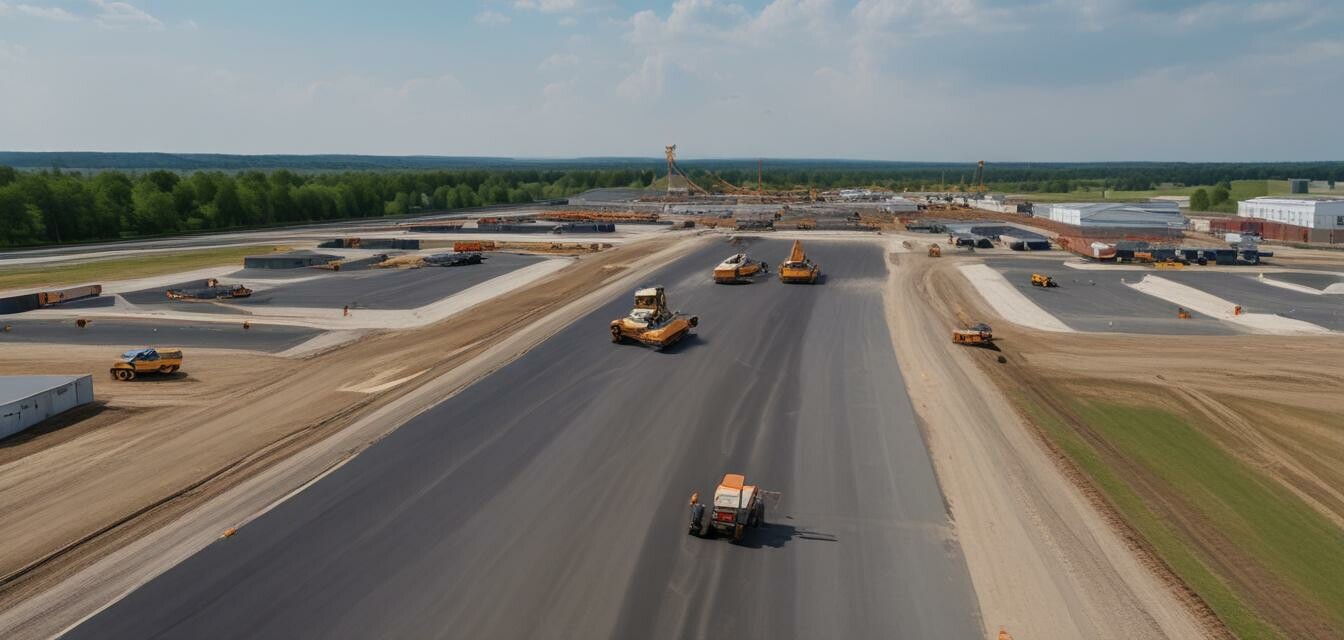
The Role of Drones in Asphalt Paving
Key Takeaways
- Drones enhance project planning through aerial site surveys.
- They improve inspection efficiency, identifying potential issues early.
- Drones help in real-time monitoring of asphalt paving operations.
- The use of drones can lead to cost savings and increased safety on job sites.
In the asphalt paving industry, advancements in technology continue to change the way projects are planned and executed. One of the most significant developments is the adoption of drones. These flying machines are not just toys; they are transforming how contractors and project managers approach their work, from initial planning to ongoing inspections. In this article, we'll explore how drones are being utilized in asphalt paving for project planning, inspection, and monitoring, ultimately improving efficiency.
How Drones are Used in Asphalt Paving
1. Project Planning
Drones have become an invaluable tool in the initial phases of asphalt paving projects. By providing detailed aerial imagery, drones help project managers gather necessary data to plan and execute jobs more effectively.
| Advantages of Drone Usage in Project Planning |
|---|
| 1. Comprehensive site surveys |
| 2. Accurate measurements of terrain |
| 3. Streamlined design processes |
| 4. Weather considerations and landscape changes |
2. Inspection Processes
Inspections are critical in ensuring quality and safety in asphalt paving projects. Drones can perform these inspections more quickly and effectively than traditional methods.
Pros
- Faster inspection times, gathering data in minutes instead of hours.
- Access to hard-to-reach areas without scaffolding or ladders.
- Enhanced visibility for quality assurance checks.
Cons
- Initial investment costs for drone equipment and training.
- Regulations and airspace restrictions can limit usage.
3. Monitoring Operations
As projects progress, real-time monitoring becomes essential to ensure everything stays on track. Drones are perfect for this purpose, as they can provide live updates on the work being done.
| Drone Monitoring Benefits | Traditional Monitoring Methods |
|---|---|
| Real-time data streaming | Periodic reports from hired personnel |
| Visual oversight of large areas | Limited to ground-level views |
| Identifies issues immediately for corrective action | Delayed issue recognition and response |
Impact on Efficiency and Cost Savings
The integration of drones into asphalt paving not only supports high-quality work but also results in significant cost reductions. By streamlining site surveys, inspections, and monitoring, project managers can reallocate resources, reduce labor costs, and minimize delays due to unforeseen issues.
Key Areas of Cost Savings
- Reduced labor time for inspections and surveys.
- Less material wastage through better project oversight.
- Lower risk of accidents, which can lead to costly insurance claims.
Emerging Technologies in Drone-Assisted Asphalt Paving
As the technology behind drones evolves, their capabilities are expanding. Future advancements may include:
- Integration with artificial intelligence for advanced data analysis.
- Enhanced imaging capabilities for better ground surface analysis.
- Extension of autonomous flying for routine inspections without human operators.
Conclusion
The role of drones in asphalt paving is shifting the landscape of project execution. By using drones for planning, inspections, and monitoring, the industry is moving toward a more efficient, cost-effective future. Whether you're a contractor or a DIY enthusiast, understanding how to leverage this technology can lead to successful project outcomes. To learn more about other essential tools and innovations in asphalt paving, check out our buying guides and products section.
Tips for Implementing Drones in Your Asphalt Paving Workflow
- Start with a thorough understanding of local regulations and requirements.
- Invest in training for drone operators to ensure safety and effectiveness.
- Regularly update your drone equipment for best performance.
- Involve stakeholders in the planning process to maximize buy-in.

